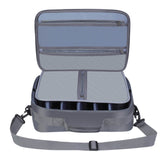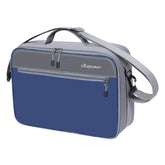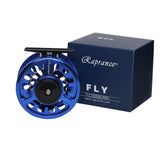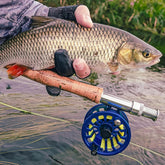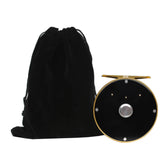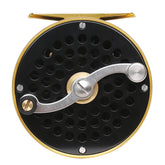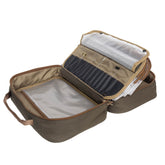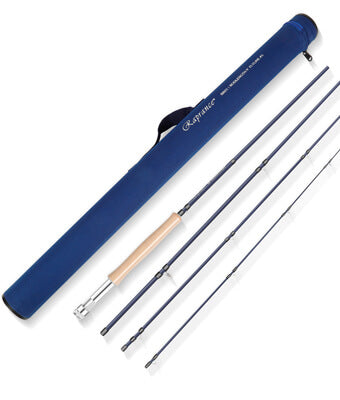Fly Line: Understanding Tippet Leaders and Tapered Connections in Fly Fishing
When it comes to fly fishing, understanding the different types of lines can significantly enhance your casting performance and overall success. Each component of your line system, from the fly line to the tippet and leader lines, plays a critical role in how your fly is presented to the fish. This article will break down the essential elements, enabling me to optimize my setup for various types of fishing environments.

The fly line is the foundation of my setup, influencing everything from accuracy to distance. Choosing the right tippet and tapered leader lines further refines my presentation, making it easier to deliver the fly with finesse. By utilizing tools like the fly fishing loop connector, I can save time and effort, allowing me to focus more on the experience of fishing rather than the intricacies of my gear.
As I explore the nuances between tapered shock leader lines and standard options, I'll share insights that can transform your fly fishing outings. Understanding these differences not only improves your efficiency but can also lead to more successful days on the water.
Fundamentals of Fly Fishing Lines
Understanding fly fishing lines is essential for effective casting and presentation. The composition, design, and types of lines impact performance, ensuring that I select the right tools for various fishing conditions.
Fly Line Composition and Material
Fly lines are typically made from materials like polyurethane and polyvinyl chloride (PVC). These materials provide different levels of durability and abrasion resistance, which are crucial for long-lasting performance on the water.
I often prefer nylon for its flexibility and strength, especially in varying weather conditions. Alternatively, Dacron is commonly used for backing lines, offering stability and resistance to wear.
The choice of material directly influences casting performance and line longevity. In my experience, selecting a line with the right composition can significantly affect presentation when targeting specific species, such as with wet flies or dry flies.
Design and Types of Fly Lines
The design of fly lines varies widely, affecting casting style and technique. Key types include weight-forward, double taper, and sink tip lines, each tailored for specific fishing scenarios.
- Weight-Forward Lines: These are ideal for longer casts and are effective in windy conditions.
- Double Taper Lines: Best for delicate presentations, offering versatility for close-to-medium distance fishing.
- Sink Tip Lines: Perfect for reaching deeper waters quickly, particularly when fishing for species that feed below the surface.
The tapering of the line determines how it behaves during casting. A well-designed taper allows for smoother transfers of energy, enhancing the presentation of flies. Selecting the right line design is as important as choosing the right fly itself for successful fly fishing.
Leaders and Tippets

When fly fishing, choosing the right leaders and tippets is crucial for optimal performance. These components influence the presentation of the fly, line strength, and overall success. Here, I will discuss key aspects of tippet leader lines, tapered leader lines, tapered shock leader lines, and fly fishing loop connectors.
Tippet Leader Lines
Tippet leader lines are essential for achieving the desired delicacy in fly presentation. These lines connect the fly to the thicker leader. Tippet material varies by strength and diameter, enabling visibility and flexibility for different fishing conditions.
Common materials for tippet lines include monofilament and fluorocarbon. Monofilament offers good knot strength and visibility, while fluorocarbon excels in low visibility and durability. Choosing the appropriate tippet length is critical, as longer tippets can improve stealth in clear waters.
I typically select a tippet that has a breaking strength suitable for the species being targeted, ensuring I have a balance of strength and invisibility.
Tapered Leader Lines
Tapered leader lines are designed for superior casting performance. They feature a gradual change in diameter from the thicker butt section to the thinner tip. This taper helps in transferring energy smoothly from the fly line to the fly.
The material often includes durable monofilament, providing strength and elasticity while minimizing visibility. A well-made tapered leader enhances casting accuracy and enhances the fly's natural movement in the water.
Depending on my fishing style, I might choose a leader designed for freshwater or saltwater fishing, as they may vary in durability and weight considerations.
Tapered Shock Leader Lines
Tapered shock leader lines are vital for situations where extra strength and shock absorption are needed. These lines are thicker at the butt and taper down to a thinner section, similar to standard tapered leaders. They're particularly important when targeting larger species or in conditions with strong currents.
I use shock leaders made from robust materials that can withstand the stress of sudden pulls. The elastic properties of these leaders help reduce the risk of breakage during intense fights.
Utilizing a shock leader with high durability allows me to fish with confidence, especially when targeting stronger fish species.
Fly Fishing Loop Connectors
Fly fishing loop connectors simplify the process of attaching tippets to leaders. A braided loop connector allows for a secure and smooth connection, facilitating easy line changes when needed.
Using these connectors enhances the flexibility of my setup, as I can quickly adapt to different conditions. The durability provided by a braided loop connector ensures a strong relationship between the tippet and leader.
Incorporating loop connectors into my rigging process improves overall efficiency and often leads to successful fishing experiences.
Advanced Techniques and Gear Selection

In fly fishing, choosing the right gear and employing advanced techniques can significantly enhance my success on the water. I focus on selecting the appropriate fly line and understanding the role of accessories to improve presentation and effectiveness.
Selecting Appropriate Fly Line for Target Species
When choosing fly line, I consider several factors, such as the target species and the type of fishing I plan to undertake. For instance, trout fishing may require a different line than targeting larger species such as steelhead or salmon.
I prefer fly lines
with specific designs suited for various conditions. Weight-forward lines are great for distance and wind, while double taper lines excel in delicate presentations. The right line material can also improve casting performance and durability. For instance, PVC lines provide good buoyancy, while polyurethane lines offer higher abrasion resistance.
I ensure that the line strength matches the expected weight of the fish to avoid breaking during a fight. Choosing the right line allows for better control and presentation, ultimately increasing my chances of a successful catch.
The Role of Swivels and Bait in Fly Fishing
Incorporating swivels can be beneficial in my fly fishing setup. Swivels help to reduce line twist, which can occur when using spinning bait or during casting. This ensures that my fly maintains its natural presentation, making it more attractive to fish.
Using bait in conjunction with my flies can enhance my strategy. I often pair my flies with live bait or synthetic options to attract specific target species. Tippet leader lines provide the necessary strength and invisibility to complement this setup. Selecting the right size of tippet is crucial; too thick may spook fish, while too thin can break under tension.
These accessories play a vital role in my overall fishing technique, improving my chance of success through better presentation and minimizing interference with my fly's natural movement.

